15 Things You Never Knew About Mortal Kombat
From chronologically confused Terminators to lost SNES ports, these are some of the kraziest things you never knew about Mortal Kombat.
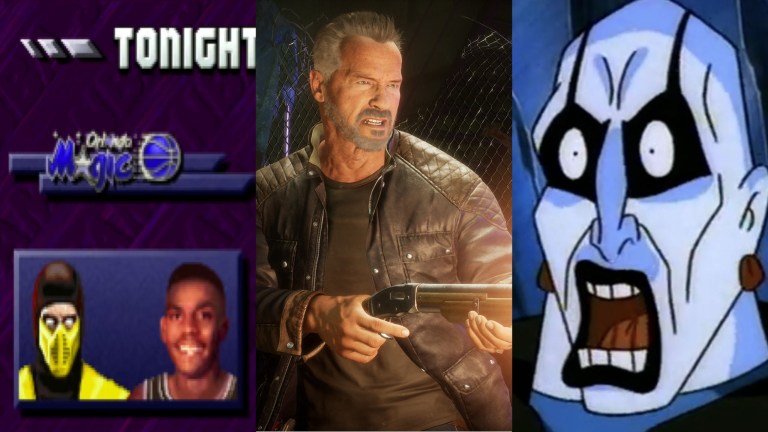
Mortal Kombat is a prolific fighting franchise. Despite the upcoming game’s Mortal Kombat 1 title, it is actually the twelfth mainline game in the series, and that number doesn’t account for the various spinoffs and countless upgrades. Then you have all the comics, movies, TV shows, web shows, techno albums, and other stuff that grew out of the series. From Liu Kang fighting a stop-motion Goro in a dingy dungeon to seeing him reinvent the entire universe, Mortal Kombat has seen some stellar highs and embarrassing lows.
What I’m saying is, Mortal Kombat is…a lot. So, as we prepare for Liu Kang and Shang Tsung’s war over the rebooted Earthrealm, let’s talk about some lesser-known parts of the franchise that you might not know about.

15. The Johnny Cage/Guile Connection
Do you know how Bill Murray and Lorenzo Music have both portrayed Peter Venkman and Garfield? There’s a weird fighting game version of that.
In Mortal Kombat 1, there will be a DLC skin for Jean-Claude Van Damme as Johnny Cage. This is a wonderful payoff to how the original Mortal Kombat was initially intended to be a Bloodsport video game that did not work out, which ended with Johnny Cage being based on JCVD. However, this is not Van Damme’s first time as a fighting game character as he previously got to play Guile in the 1994 Street Fighter movie and its digitized arcade adaptation.
Community star Joel McHale has recently been playing the role of Johnny Cage in the Mortal Kombat Legends animated films, including the Johnny-based upcoming release, Cage Match. About a decade ago, McHale also made a special appearance on Pete Holmes’ YouTube series Street Fighter Red Tape, which is based around an accountant trying to make sense of M. Bison’s World Warrior fighting tournament. McHale plays Guile, who can’t stop lying about his military background and insists he won “a war” using his Flash Kick. McHale also looks a lot more game accurate as Guile than JCVD did in the sense that he looks utterly ridiculous.
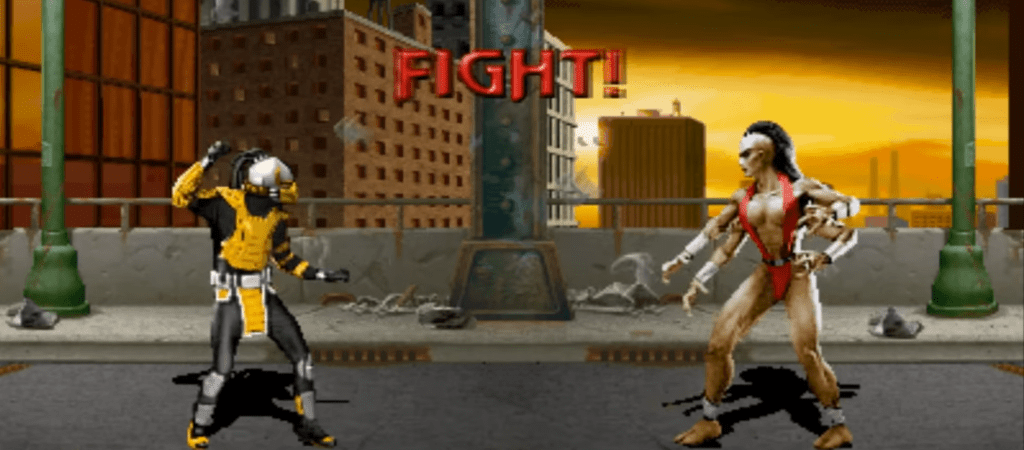
14. Mortal Kombat II’s Comic Foreshadowed the Cyber Ninjas
One of the more memorable parts about Mortal Kombat 3 was its subplot about the Lin Kuei becoming a bit too cutting edge by insisting that all its assassins undergo a process that would transform them into soulless robots. It introduced Sektor and Cyrax while reintroducing Smoke as a cyborg and turned Sub-Zero into a renegade who discarded the ninja outfit for a new look. Based on the games before it, this storyline came completely out of nowhere.
However, that’s not entirely true. In the Mortal Kombat II prologue comic, the Kuai-Liang version of Sub-Zero is introduced by coming out of a futuristic jet, wearing a suit, and handing his business card to Liu Kang and Kung Lao. He mentions how his brother, slain in the first game, was behind the times and was not as adept at technology as the rest of the Lin Kuei had become. Interestingly enough, the jet is piloted by Smoke, who despite being introduced in Mortal Kombat II, completely lacked anything resembling a story. This was the first confirmation that he was part of the Lin Kuei and had any connection to Sub-Zero.
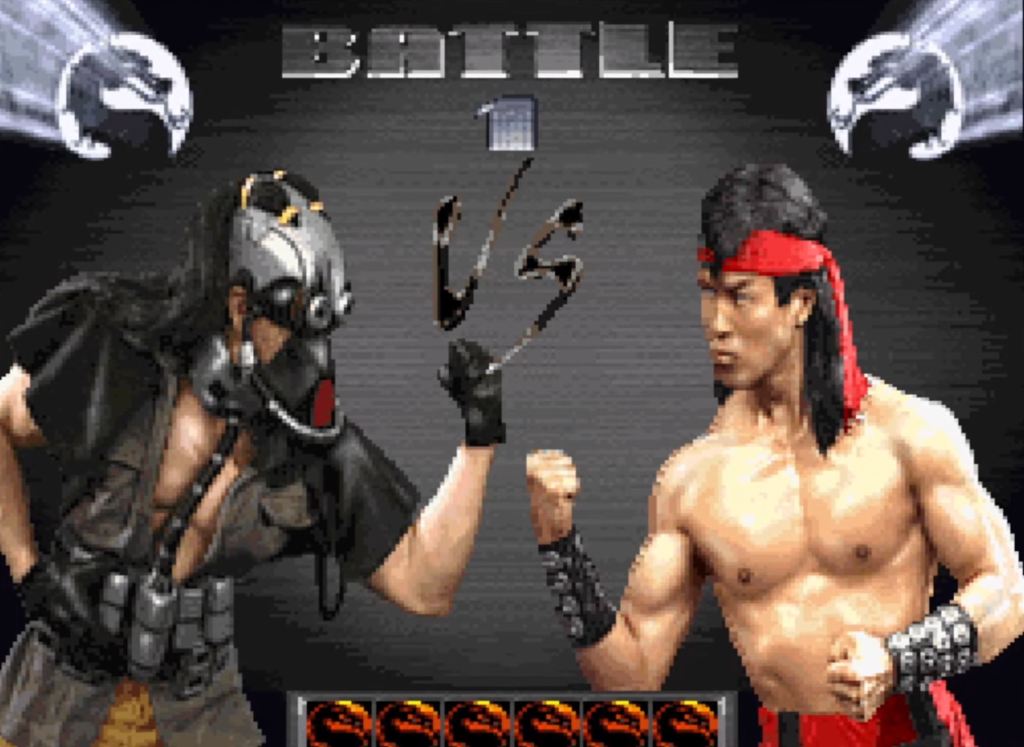
13. The Kombat Kodes Sprinkled Through Multimedia
Mortal Kombat 3 introduced Kombat Kodes, which allowed you to press certain buttons a certain amount of times to turn the versus screen into a slot machine. If you lined up the correct sequence of symbols, it would affect gameplay in some way or perhaps just give you a special message. They really wanted to make a big deal out of this and even used it as part of the marketing, figuring that it would add another layer of replay value. As this was the peak of Mortal Kombat’s initial popularity, they made sure to throw random Kombat Kodes into everything they could.
Not only was there a Kombat Kode mixed into the end credits of the 1995 Mortal Kombat movie, but there’s also one etched in the wall in the background of the Liu Kang vs. Reptile fight scene. The animated tie-in Mortal Kombat: The Journey Begins featured one in its own end credits, but it didn’t actually do anything in-game. Otherwise, the Kombat Kodes popped up in print ads, at the Mortal Kombat: Live Tour, t-shirts, and even the commercial for the game’s arcade release.
Yes, Mortal Kombat 3 was such a big deal that even the arcade release got its own TV ad. So weird…
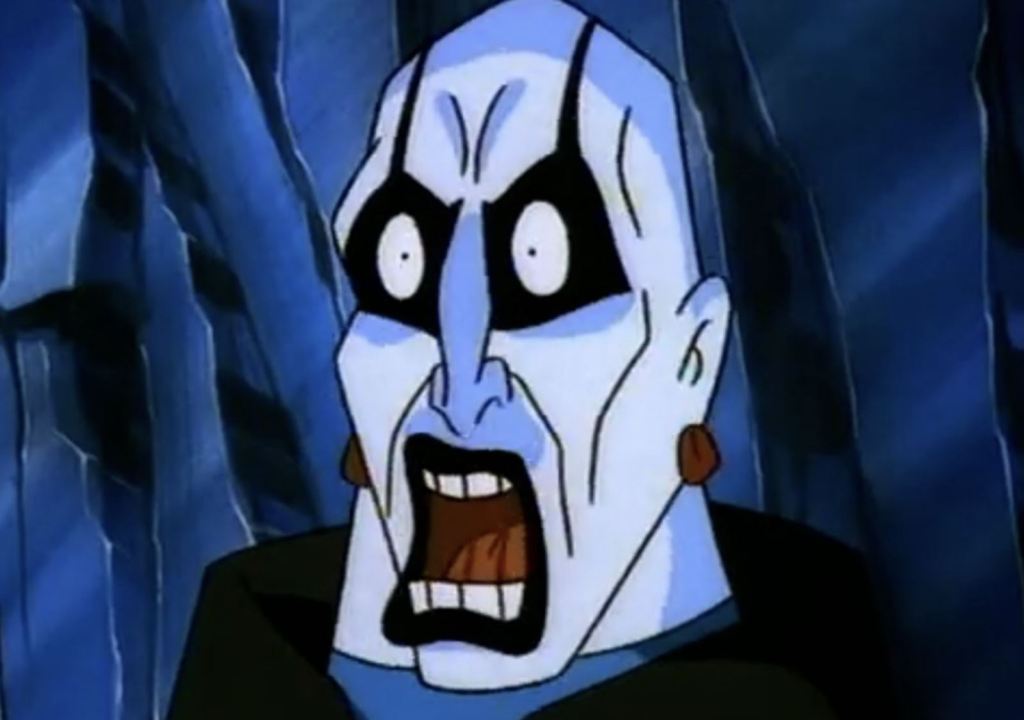
12. Quan Chi’s Saturday Morning Debut
Sometimes fighting game characters are introduced in odd ways ahead of their official in-game debut. Street Fighter’s Zeku, Tekken’s Kazumi Mishima, and Guilty Gear’s That Man/Asuka R. Kreutz each joined their respective rosters decades after being formally introduced or namedropped. Mortal Kombat isn’t as extreme, but the series does have a history of building towards certain characters ahead of time. For instance, Shinnok was mentioned in several Mortal Kombat Trilogy endings. Mortal Kombat: Deadly Alliance is dedicated to building up Onaga as the next game’s big boss. The mysterious female entity in Jade’s Mortal Kombat 9 ending is supposed to be Mortal Kombat 11’s Kronika.
Quan Chi’s introduction was a bit more unique. Despite making his official appearances in Mortal Kombat 4 and Mortal Kombat Mythologies: Sub-Zero in the fall of 1997, he first showed up in the animated series Mortal Kombat: Defenders of the Realm about a year before that. In the eighth episode of the series, released about a year before his giant face would leer at us from the side of the Mortal Kombat 4 arcade cabinets, Quan Chi was the villain of the week in the cartoon quasi-sequel to the live-action movie. It wasn’t the most memorable episode, outside of the revelation that Jax is sensitive about having a weight problem when he was a kid and being called “Blubber Butt.”
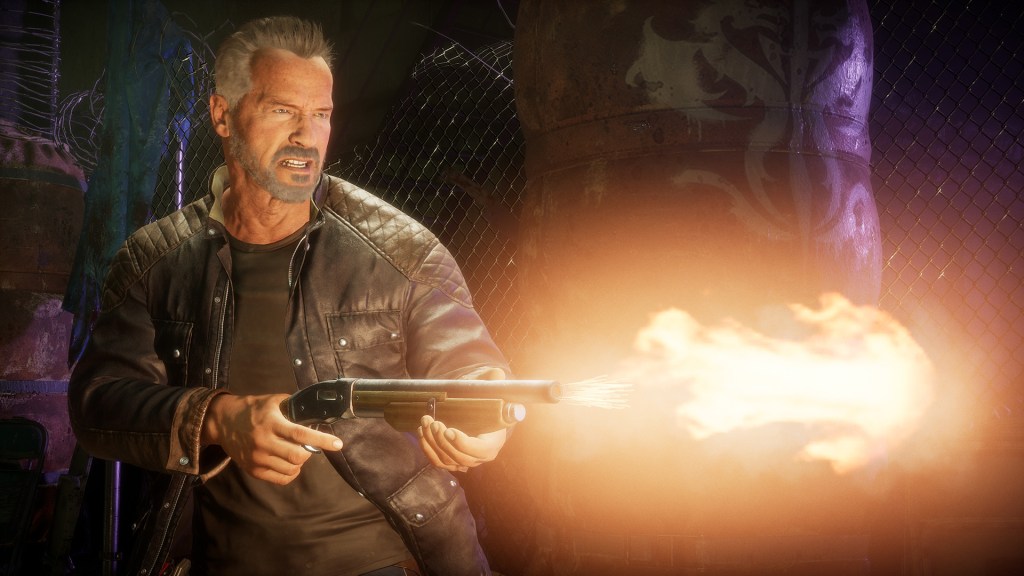
11. I’ll Be Callback
One of the coolest things about the first couple Mortal Kombat games was that you could actually order a prologue comic book from the arcade machines. These comics were done by series co-creator John Tobias. The one for the first Mortal Kombat featured some backstory to the tournament, a tense meeting between Scorpion and Sub-Zero, and even out-of-date bios for most of the cast. Did you know Johnny Cage has an ex-wife and that Sonya has a dead twin brother?
Anyway, when Kano escapes Sonya and the Special Forces, he jumps onto the boat to Shang Tsung’s island. There, he bumps into Johnny Cage. At first seeming star-struck, he then turns to smacking Johnny around while asking him to say, “I’ll be back!” Johnny simply states that that isn’t his movie. Of course, that line was actually said by the Terminator. In fact, Arnold Schwarzenegger is even called out in Johnny’s Mortal Kombat 4 ending. In other words, the Terminator movies exist as fiction in the Mortal Kombat universe.
The Terminator would appear in Mortal Kombat 11, making this one of those confusing situations where he exists in this universe, but is also a fictional character. It’s like that time on Bones when they talked about watching Sleepy Hollow, but then they later did a crossover with Sleepy Hollow.
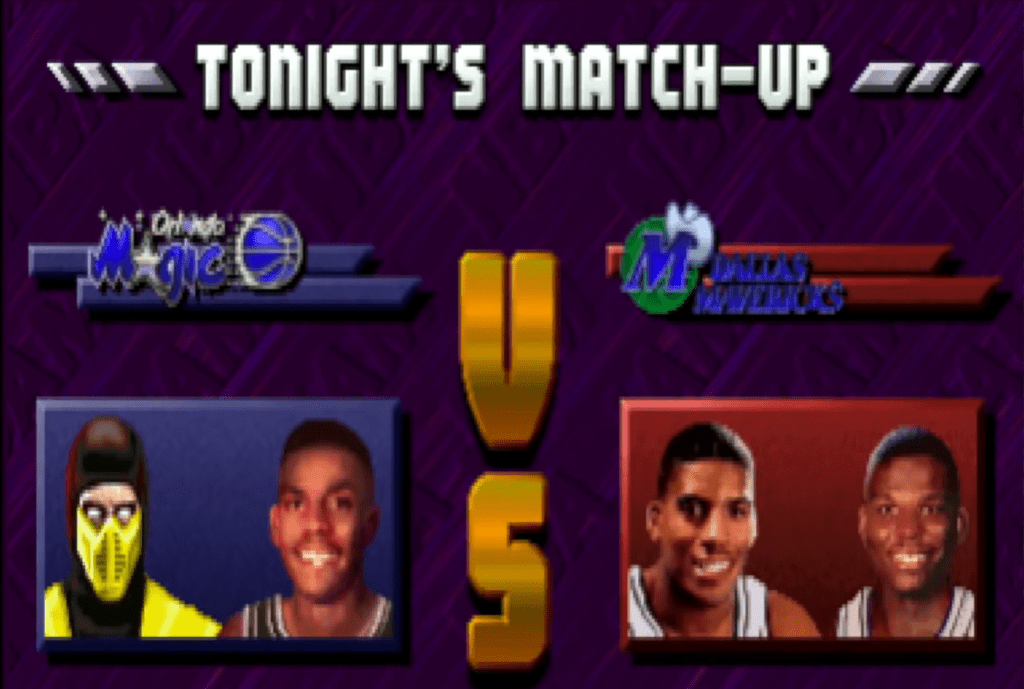
10. Mortal Kombat Was Too Violent For the NBA
The NBA Jam games not only had addictive gameplay but featured some of the coolest secret gimmicks ever. By entering specific initials and birthdates for your profile, you could unlock all sorts of special ballers. Developers, mascots, celebrities, monsters, and other goofballs were all available.
NBA Jam Tournament Edition even did a little cross-promotion by adding some Mortal Kombat names to the basketball court. Raiden, Sub-Zero, Scorpion, and Reptile were all playable, featuring their Mortal Kombat II select screen images. There were even occasional advertisements for Mortal Kombat in the background and the ability to “Fatality” your opponents by shoving them and watching them briefly be engulfed in flames.
Sadly, good times don’t always last. After the second version of the game was released, all the Mortal Kombat stuff was scrubbed from Tournament Edition. As it turned out, the NBA was not happy with the union and wanted to keep their distance from the M-rated game series.
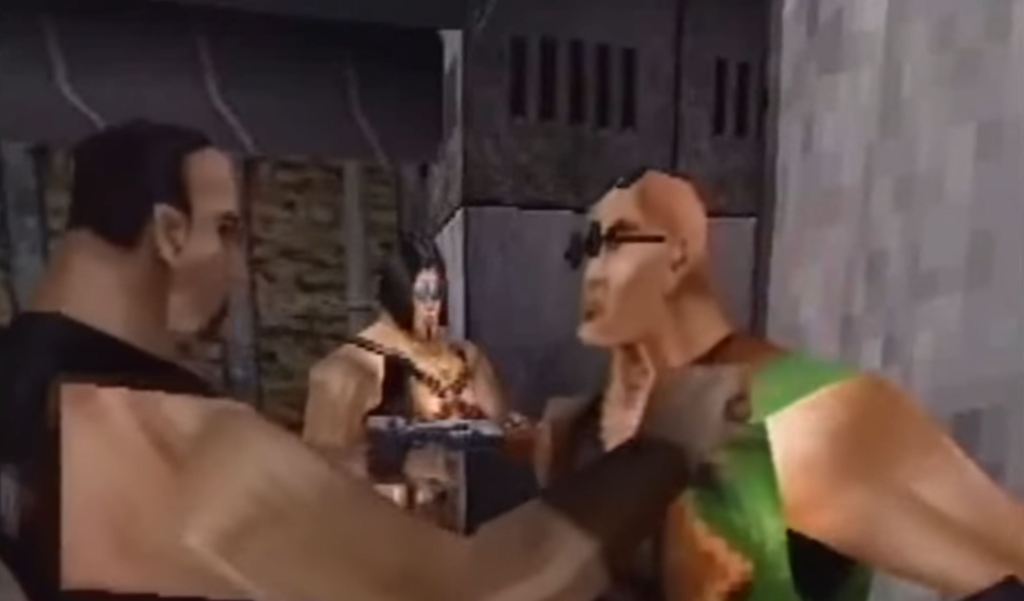
9. Kabal’s Cut Cameo In Special Forces
Mortal Kombat: Special Forces was a disaster that was rushed out the door in an unfinished state. It was hyped up as a Jax and Sonya team-up game with co-op, but by the time it came out, it was Jax only, and there was not a single reference to Sonya at all. Well, she wasn’t the only one to get burned out of the final product.
Years back, footage of the Special Forces beta was released, which included some cutscenes that did not make it to the final game. One of those cutscenes even featured Kano (pre-eye laser) and Kabal (pre-gasmask). When Kabal debuted in Mortal Kombat 3, it was explained that he was a former member of the Black Dragon. Special Forces was going to go deeper into that, showing that while he was fine being part of a drug cartel and selling missiles to smaller countries, the fact that Black Dragon was moving up by stealing and dealing nukes was getting to be too much for him. Sadly, this was all removed and the only thing that remained was the random inclusion of his character model in the released version.

8. Scorpion Has a Potty Mouth
While Mortal Kombat: Shaolin Monks was based around Liu Kang and Kung Lao, Scorpion still had a big enough role as a stage boss, an unlockable character, and part of the Versus Mode. Of course, he had access to his iconic spear attack. Since the beginning of the series, landing tha move causes Scorpion to reel in his opponent by yelling “COME OVER HERE!” or “COME HERE!”
In Shaolin Monks, if the spear is spammed enough, Hanzo gets a bit blue with his catchphrase. Sometimes he’ll yell, “GET OVER HERE, B****!” Sometimes he’ll even yell, “GET THE F*** OVER HERE!” Whoa, dude! Keep it down! Children are playing this gorefest!
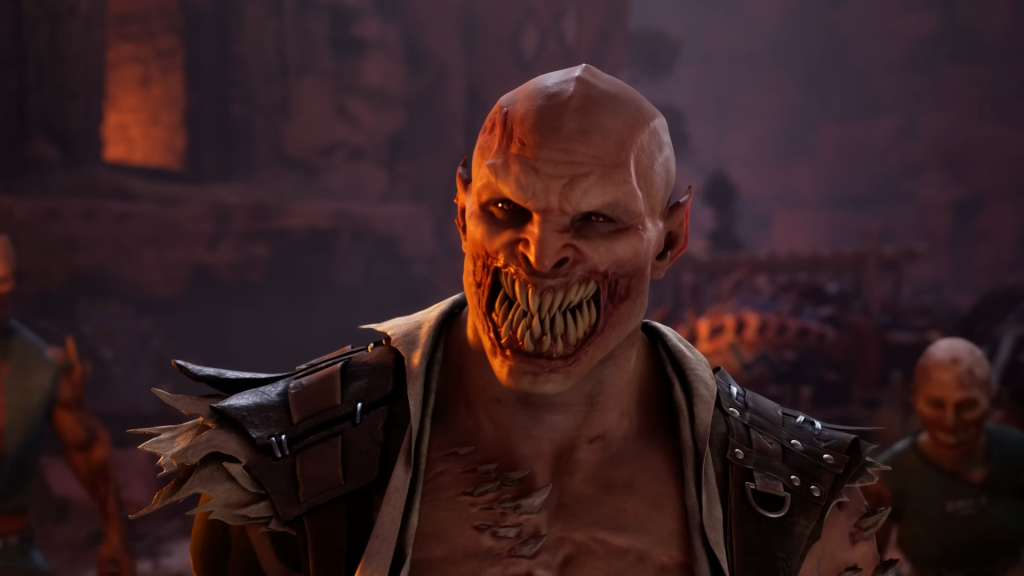
7. Ultimate Mortal Kombat 3’s Abandoned Sequel Bait
Mortal Kombat 3 was eventually upgraded into Ultimate Mortal Kombat 3, which, among other things, added a whole lot of male and female ninja characters to the roster. However, the endings for the four unlockable characters were sloppy nonsense and felt like they were written at the last minute. Ermac showed up for the sake of revealing that he existed. Human Smoke went to train with Sub-Zero, Scorpion, and Reptile. Classic Sub-Zero surprised everyone by unmasking and revealing…to be continued!
Every one of these epilogues ended with a reference to the character returning for the upcoming fourth tournament. Most interesting of all was Mileena’s ending, in which she and Baraka kidnapped Kitana and Sindel and held them hostage so they could force Shao Kahn to lure Earthrealm’s heroes into entering a tournament. The implication was that Baraka would be that tournament’s big bad. Considering Baraka has a reputation for being the series’ jobber villain, the thought of him being the final boss in Mortal Kombat 4 is strange to think about.
Ultimately, nothing really came out of the implication, though. Other than Classic Sub-Zero, all of those endings were completely overhauled for Mortal Kombat Trilogy and eventually made a lot more sense.
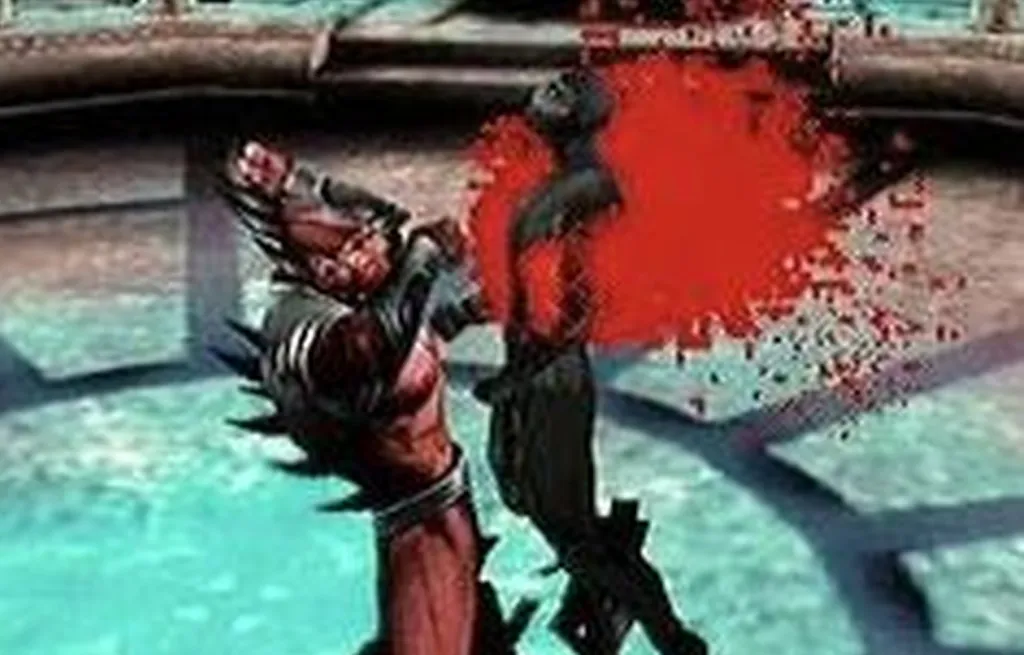
6. Belokk: The Devil You Don’t Know
Mortal Kombat Gold was the Dreamcast exclusive version of Mortal Kombat 4 that added more characters to the initial roster. All of those characters were returning heroes and villains, like Kitana, Mileena, Sektor, Baraka, etc. However, there was a time when we were going to get a brand new character named Belokk, who was seemingly some kind of massive demon. He did not end up in the final game, but several pictures of him were sent by port developer Eurocom to gaming magazines. The images showed two skins for Belokk (red and black) and he seemed to have moves similar to Goro.
So what happened? The rumor is that Eurocom created him themselves and Midway was not keen on the idea of a third party introducing a new character, especially when it comes to the legal aspects. Ed Boon himself says that the character ended up on the cutting room floor due to lack of time to finish him. Regardless, there are scant references to Belokk – or at least a missing extra character – in the code.
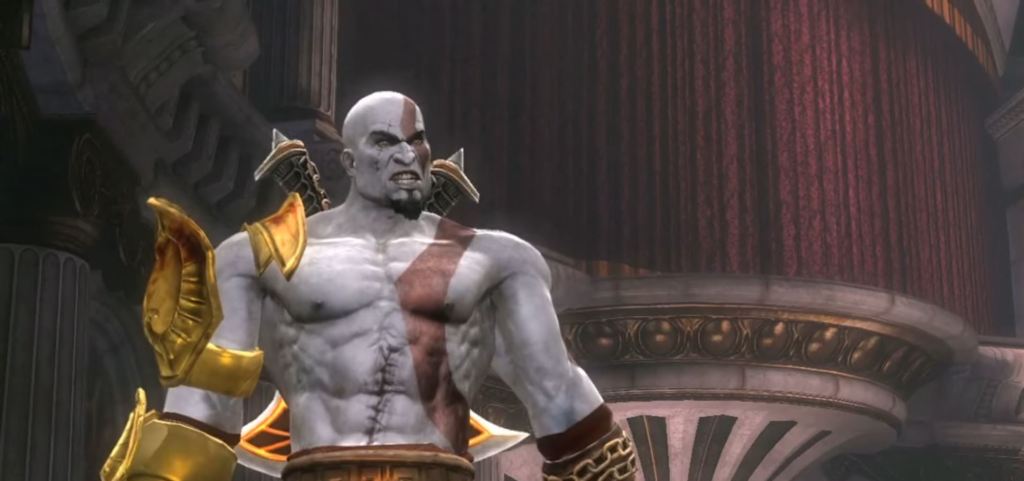
5. The Kratos Story Mode Cameo
Kratos was a console-exclusive character in the PlayStation 3 version of Mortal Kombat 9. While he came with his own ending, special stage, and even stage Fatalities, featuring Kratos in the game did come with some annoying caveats. See, Sony was not keen on Kratos coming off as anything but the most badass dude to ever exist, so they made NetherRealm Studios alter certain Fatalities when used on Kratos. Kratos could die, but he could not be shown suffering in an overly animated way, showing fear, or being humiliated. For instance, Johnny Cage could not karate chop Kratos’ skull in half and plant a movie award statue in the middle.
Unlike other guest characters, though, Kratos did get to show up in the game’s Story Mode, if only for a little bit. In the PS3 version of the game, when Sub-Zero starts his chapter during the altered events of Mortal Kombat II, he is shown freezing Kratos in a block of ice after presumably defeating him in battle. Rather nonchalantly, Sub-Zero remarks, “A pity you could not have cooperated,” before being distracted by Cyrax. In the Xbox 360 version, the ice block is completely empty.
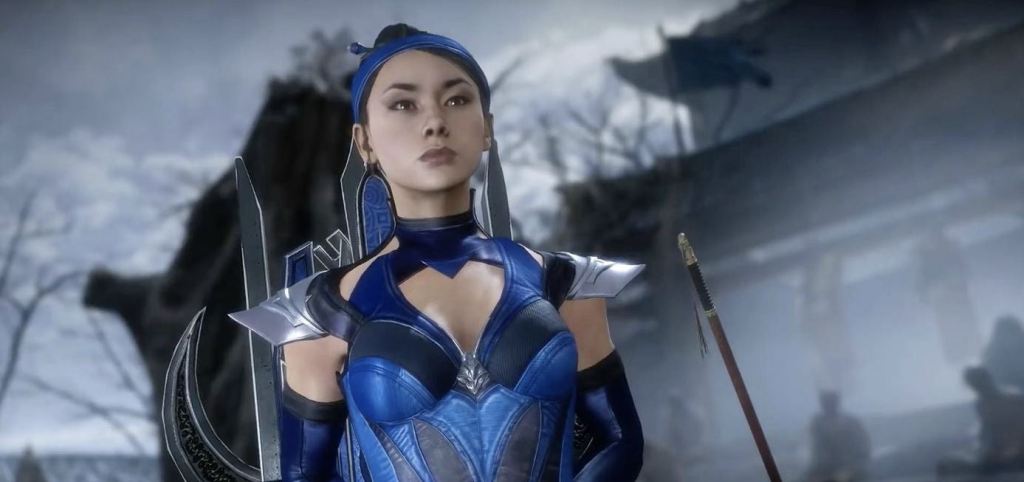
4. Kitana and Stryker Were Going to Be In the First Mortal Kombat Game
Early in Mortal Kombat’s development, John Tobias had most of the general character archetypes picked out, even though the names would need some work. Liu Kang was going to be the hero, Kano was going to be a trickster villain, and there was going to be one ninja trying to hunt down another.
Not every character concept made it into the final version of the game, though. Initially, Kurtis Stryker was meant to be the grounded skeptic character. Presumably, he was going to be a soldier instead of a police officer. Also, the game’s movie star was going to be called Michael Grimm, the four-armed boss was Gongoro, and the shape-shifting antagonist was going to be Shang Lao.
There was also another unplayable boss character players would face prior to (Gon)Goro named Kitsune. She was going to be Shang’s assassin daughter, who would ultimately fall for Liu Kang and turn on her father. With Kitsune cut from the final roster, they needed some female representation. So, Stryker became Sonya Blade, with a design based on martial arts star Cynthia Rothrock. As Shao Kahn was introduced in the following game, Kitsune would be reimagined as Kitana and would play his adopted assassin daughter instead.
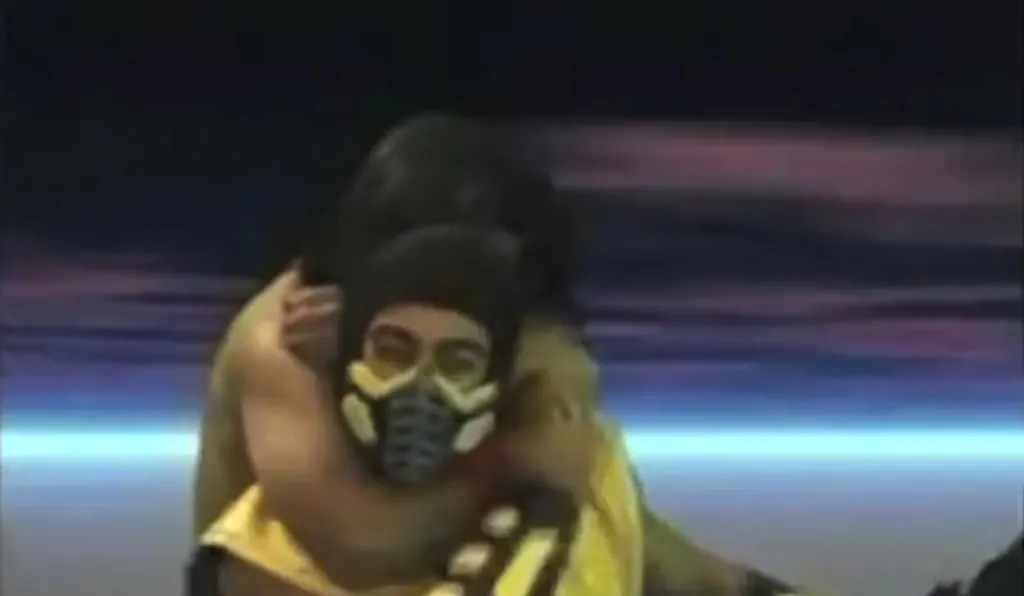
3. The Other, Other Mortal Kombat Movie Sequel
There are a lot of less-than-stellar adaptations of Mortal Kombat out there. That said, while a lot of venom has been sent in the direction of Mortal Kombat: Annihilation, Mortal Kombat: The Journey Begins, and Mortal Kombat: The Live Tour, there is one that is far worse than them all.
Back in 2000, a web series came out called Mortal Kombat: Federation of Martial Arts. Hosted on the official Mortal Kombat website, it was a big stock-based game for fans that allowed them to gamble on fights with fake money. Taking place in the same continuity as the two Mortal Kombat movies and the TV prequel Mortal Kombat: Conquest, it involved various one-on-one fights between series regulars and not-so-regulars that would go two out of three rounds and featured quick and incredibly awkward action.
Even though various actors from different Mortal Kombat projects returned, the whole thing was incredibly low budget and looked it in every instant. They even used an image of Fujin’s Mortal Kombat 4 select screen icon instead of simply having an actor play him. At least it gave us Johnny Cage’s self-proclaimed brother Jimmy Cage. He did not do so well.
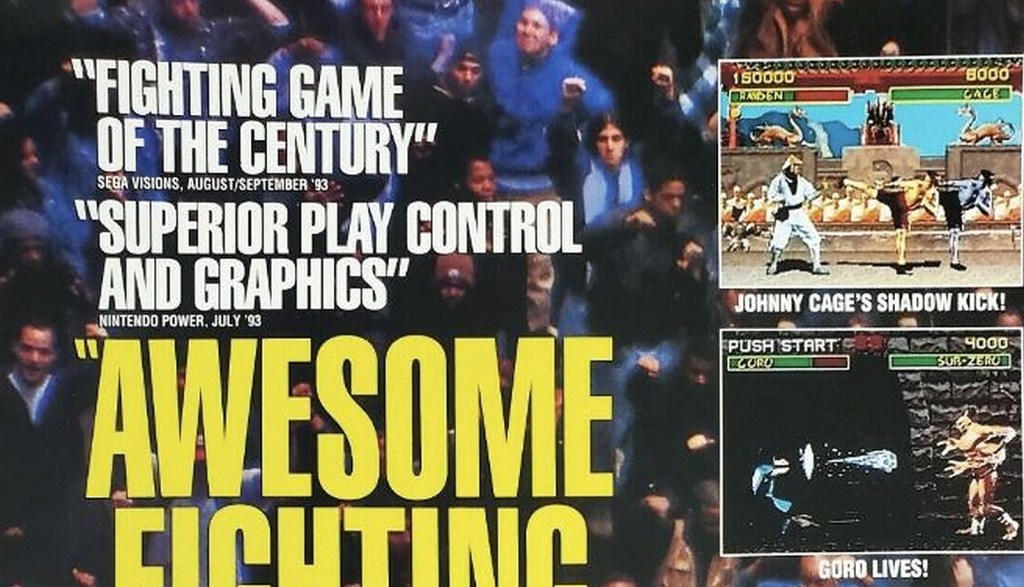
2. Mortal Kombat Nitro: The Unreleased SNES Upgrade
The home release of the original Mortal Kombat was a huge moment in both the 16-bit console war and the way Nintendo did business. As you may know, the SNES version of Mortal Kombat replaced its blood with green sweat and sanitized the “Finishing Moves.” The Genesis version had blood and gory Fatalities available via a special code, making that version far more profitable. Nintendo looked at the numbers and gave in when it came to the sequel. Mortal Kombat II was allowed to be gruesome.
In between those games, though, we almost got a Mortal Kombat re-release for the SNES. Known as Mortal Kombat Nitro, this SNES port not only had all the blood and Fatalities reinstated, but the original three bosses would be playable, a new secret boss would be introduced, the speed could be altered, everyone had alternate endings depending on who they killed in the arcade ladder, and you could even unlock new color schemes. While it was far enough along, they decided to axe it as they were afraid it would dilute things for the audience with Mortal Kombat II on the way to consoles.
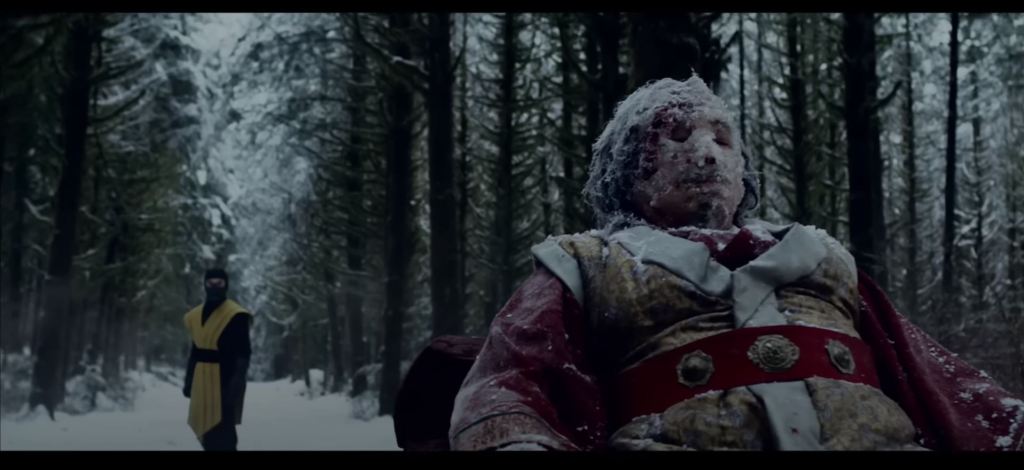
1. The Mortal Kombat Legacy Web Series Season We Never Got to See
The web series Mortal Kombat Legacy ended on a cliffhanger after two seasons. What’s crazy is that not only was a third season in the works, but it was supposed to tie into the release of Mortal Kombat X. In fact, it was the leaked casting call that gave fans the first descriptions of several new characters in that game, like Kung Jin, D’Vorah, and Erron Black (originally called Salazar). Then…nothing!
People involved with the third season’s production claim that it was fully filmed and finished, but never actually released. However, the leaked cast is kind of insane. Casper Van Dien reprised his role as Johnny Cage, Cary-Hiroyuki Tagawa returned as Shang Tsung, Ray Park played Erron Black, Booboo Stewart as Takeda, Lewis Tan (who played Cole Young in the recent movie) portrayed Kung Jin, and it even had Eric Roberts of all people as Bo’ Rai Cho. Not to mention live-action Ferra/Torr. At this point, you’d think someone would just release it in one of the games as an unlockable or something.
